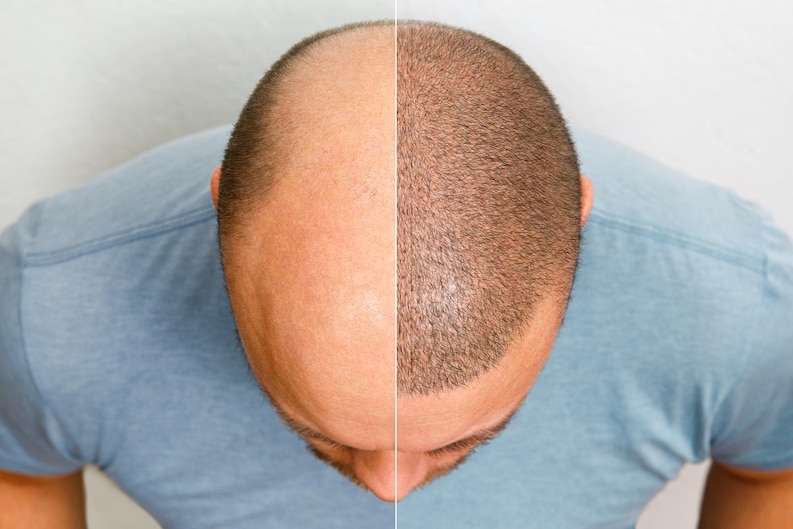
Hair Transplant Surgery Myths vs. Facts: Debunking Common Misconceptions
Hair loss is a prevalent concern that affects many individuals worldwide. As people seek solutions to combat hair loss, they often encounter various myths and misconceptions about hair transplant surgery.
In this blog post, we aim to debunk the most common hair transplant surgery myths by presenting the facts. By separating fiction from reality, we hope to provide accurate information and help individuals make informed decisions regarding their hair restoration options.
Myth 1: Hair transplant surgery is painful.
Fact: Hair transplant surgery is performed under local anesthesia, ensuring that the procedure is virtually painless. Patients may experience minor discomfort during the administration of anesthesia or the healing process afterward. However, advancements in surgical techniques and anesthesia have significantly reduced the level of pain associated with the procedure.
Myth 2: Hair transplant surgery leaves noticeable scars.
Fact: While it is true that hair transplant surgery involves incisions, modern techniques have minimized scarring.
In Follicular Unit Extraction (FUE), individual hair follicles are extracted without leaving a linear scar. Instead, tiny puncture marks, which fade over time, are left on the donor area.
In Follicular Unit Transplantation (FUT), where a strip of scalp is removed, skilled surgeons employ meticulous closure techniques to create a fine, linear scar that is easily concealable.
Myth 3: Hair transplant surgery provides instant results.
Fact: Hair transplant surgery is a gradual process, and it takes time for transplanted hair follicles to grow and produce visible results. After the procedure, the transplanted hair initially sheds, but new hair growth typically begins within a few months. It can take several months to a year for the full results to be visible, as hair growth is a natural and ongoing process.
Myth 4: Hair transplant surgery is only for men.
Fact: While it is commonly associated with male pattern baldness, hair transplant surgery is suitable for both men and women. Women may experience hair loss due to hormonal imbalances, genetic factors, or other causes. Hair transplant surgery can effectively restore hair in women, depending on the individual’s specific condition and suitability for the procedure.
Myth 5: Transplanted hair requires special maintenance.
Fact: Transplanted hair does not require any special maintenance beyond regular hair care practices. Once the transplanted hair has grown, it can be washed, styled, and treated just like natural hair. There are no specific restrictions or requirements for maintaining transplanted hair, making it a convenient and hassle-free solution for individuals seeking a long-term hair restoration option.
Myth 6: Hair transplant surgery results in an unnatural appearance.
Fact: Skilled surgeons with expertise in hair transplant surgery can deliver natural-looking results. The transplanted hair follicles are carefully placed in a manner that mimics the natural hairline and density. As the hair grows, it blends seamlessly with the existing hair, making it virtually indistinguishable from the original hairline. Achieving natural results heavily depends on the surgeon’s experience and aesthetic sense.
Myth 7: Hair transplant surgery is only suitable for extensive hair loss.
Fact: Hair transplant surgery is not limited to individuals with extensive hair loss. It can be customized to address various degrees of hair loss, from minor thinning to significant baldness. The procedure can be tailored to the individual’s specific needs and desired outcome, making it suitable for a wide range of hair loss cases.
Myth 8: Hair transplant is only for young people.
Fact: Hair transplant surgery is not limited to young people. While it is true that younger individuals may opt for hair transplant surgery to address early-stage hair loss or receding hairlines, age is not a determining factor for eligibility.
Hair transplant surgery can be performed on individuals of various age groups, depending on their specific hair loss pattern and overall health.
Older individuals experiencing hair loss can also benefit from the procedure, provided they have sufficient donor hair for transplantation.
The suitability for hair transplant surgery is assessed on a case-by-case basis, taking into consideration factors such as the cause and extent of hair loss, donor hair availability, and the individual’s overall health.
Myth 9: Hair transplant is not permanent.
Fact: Hair transplant surgery can provide permanent results. The transplanted hair follicles are typically taken from areas of the scalp that are resistant to the effects of DHT (dihydrotestosterone), the hormone responsible for hair loss in individuals with androgenetic alopecia (pattern baldness).
These transplanted follicles retain their resistance to DHT even after being transplanted into the recipient area. As a result, the transplanted hair continues to grow naturally and is not affected by further hair loss.
These transplanted follicles retain their resistance to DHT even after being transplanted into the recipient area. As a result, the transplanted hair continues to grow naturally and is not affected by further hair loss.
